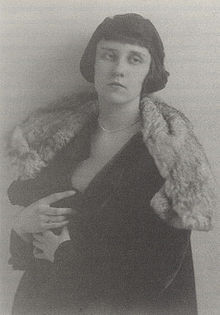
Prudence Heward, born Efa Prudence Heward in Montreal in 1896, is celebrated as one of Canada's most remarkable figure painters, known for her compelling portraits and landscapes that reflect a deep understanding of color, form, and modernist influences. Her life and work not only contributed significantly to Canadian art but also showcased her ability to capture the human spirit with an intensity that was both innovative and emotionally resonant.
Early Life and Artistic Formation
Heward's passion for art emerged early, influenced by her environment and the vibrant artistic community in Montreal. She began her formal education at the Art Association of Montreal, where she studied under the renowned William Brymner. Among her peers were future prominent Canadian artists like Edwin Holgate, Sarah Robertson, Anne Savage, Kathleen Morris, and Lilias Torrance Newton. This circle of artists would later become instrumental in shaping Canadian art during the early 20th century.
Her early education was complemented by summer sketching sessions under Maurice Cullen, another significant figure in Canadian art, in Phillipsburg and Carillon. These experiences deepened her skills and expanded her artistic horizons, laying the groundwork for her future success.
War Service and Post-War Artistic Development
During World War I, Heward, along with her mother, served with the Red Cross in London, England, while her brothers fought overseas. This period of service in a war-torn environment likely influenced the depth and emotional complexity of her later work.
After the war, Heward continued her studies in Montreal under Randolph Hewton, who further fueled her interest in modern art movements. She then traveled to Paris to study at the Académie Colarossi, immersing herself in the city's vibrant artistic scene. It was here that she encountered the works of Cézanne, Renoir, Matisse, Picasso, and Modigliani, artists who would have a lasting influence on her style.
The Beaver Hall Group and Artistic Maturity
In 1920, Heward joined a group of artists on Beaver Hall Hill in Montreal, known as the Beaver Hall Group. This collective, primarily composed of women, aimed to foster a supportive environment for artists to meet, create, and exhibit their work. Although the group was short-lived due to financial difficulties, it played a crucial role in the development of modern art in Canada.
Heward's work during this period was marked by a focus on figure and portrait painting, characterized by bold color choices, strong modeling, and a keen sense of composition. Her ability to convey psychological depth in her portraits set her apart from many of her contemporaries.

Recognition and Legacy
Heward's painting "Girl on a Hill," which won first prize at the Willingdon Arts Competition in 1929, exemplifies her talent. This portrait of Louise McLea, a Montreal dancer, is a testament to her ability to capture the essence of her subjects with a blend of realism and modernist sensibility.
Her work continued to garner attention throughout the 1930s, with significant exhibitions at the National Gallery of Canada, W.W. Scott and Sons in Montreal, and other venues. Her portrait "Rollande," exhibited at the National Gallery in 1930, was a particular success and was acquired by the gallery the same year.
Heward's landscapes, though less well-known than her portraits, were also significant. Arthur Lismer, a prominent member of the Group of Seven, praised her landscapes for their structural integrity and movement, avoiding mere picturesque representation.
In 1933, she became a member of the Canadian Group of Painters and later joined the Contemporary Arts Society in 1939. Despite her failing health, she continued to create and exhibit her work, traveling and painting until her death in Los Angeles in 1947.
Posthumous Recognition
Following her death, the National Gallery of Canada organized a memorial exhibition of 101 of her works in 1948, ensuring her place in the canon of Canadian art. This exhibition traveled across Canada, introducing her work to a broader audience and solidifying her legacy as one of Canada's most distinguished painters.
Her work is included in major collections such as the National Gallery of Canada, the Art Gallery of Ontario, and the Montreal Museum of Fine Arts, as well as numerous private collections. The impact of her art continues to be felt, with her paintings recognized for their unique blend of modernist influences and deep psychological insight.
Conclusion
Prudence Heward's contribution to Canadian art is invaluable. Her mastery of portraiture, her innovative use of color and form, and her ability to convey the inner lives of her subjects make her a pivotal figure in the history of Canadian painting. Her work remains a testament to her skill, vision, and the emotional depth she brought to the canvas.
Browse our collection of Canadian paintings for sale at the Canadian Classic Fine Art gallery, The best place to buy a painting online. We provide free shipping anywhere in Canada and the United States. Our Montreal art gallery sells paintings online exclusively and have a 14 days return policy.
